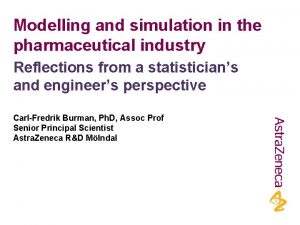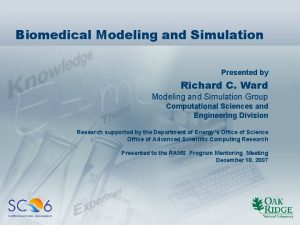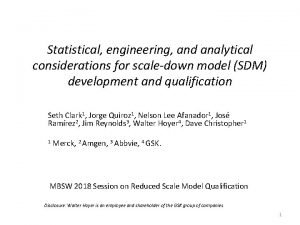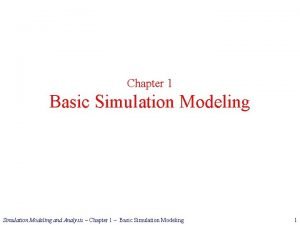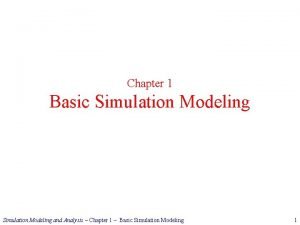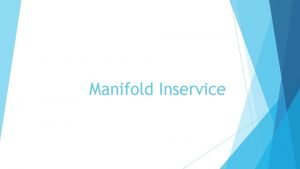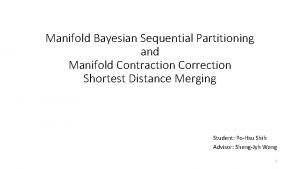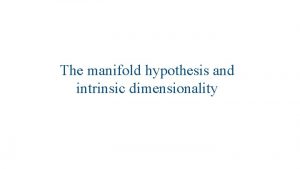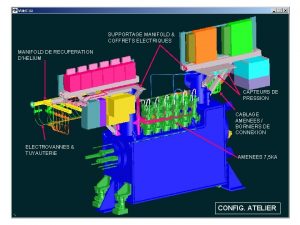Manifold Modeling and Simulation of Many Core Architectures









- Slides: 9

Manifold: Modeling and Simulation of Many Core Architectures Sudhakar Yalamanchili sudha@gatech. edu Center for Experimental Research in Computer Systems School of Electrical and Computer Engineering Georgia Institute of Technology

Manifold@GT n Faculty n Graduate n Tom Conte (SCS) n George Riley (ECE) n S. Yalamanchili (ECE) n Research n Jun Staff Wang (ECE) n Collaborators n Genie Hsieh (SNL) n Saibal Mukhopadhyay (ECE) n Arun Rodrigues (SNL) Students n Jesse Beau n Brian Hayes n Minhaj Hassan n Chad Kersey n Jason Poovy n Mitchelle Rasquinha n William Song n Peng Xu n ……. and others Sponsors: NSF (CRI), Sandia National Labs, HP Labs, Oracle SCHOOL OF ELECTRICAL AND COMPUTER ENGINEERING | GEORGIA INSTITUTE OF TECHNOLOGY 2

Manifold S. Yalamanchili, T. Conte, G. Riley Sponsors: NSF, Sandia Labs, HP Labs, Oracle dynamic power [W] A composable parallel simulation system for heterogeneous, many core systems. bzip 2 -program gromacs milc 0. 4 0. 35 0. 3 n 0. 25 0. 2 0 0. 05 0. 15 0. 25 0. 3 time [sec] Core degradation Models Physical Models n Power Energy Thermal Reliability n Logical Process (LP) Component Timing/Functional Models Simulator Kernel Engine Componen t Link Component n Manifold Kernel Inter-Kernel API Manifold Kernel Parallel Hardware Test-bed SCHOOL OF ELECTRICAL AND COMPUTER ENGINEERING | GEORGIA INSTITUTE OF TECHNOLOGY n Component-based and extensible Mixed discrete event and time stepped simulation From full system HW/SW models to abstract timing models From detailed cycle-level to high level analytic models Integration of third party tools 3

1. Current Landscape Highest performance Highest cost Lowest performance Lowest cost Software Simulation: Parallel (e. g. , Wisconsin WT, COTSon, Manifold, ) Manifold Software simulations: single node (e. g. , SIMICS) n Mature Accelerated Simulation (e. g. , FAST) FPGA-Based Prototyping (e. g. , RAMP) Custom Prototyping point tools n Cores, memory hierarchies n Thermal and power n ………… n Complex component models n Distinguish between models and engineering SCHOOL OF ELECTRICAL AND COMPUTER ENGINEERING | GEORGIA INSTITUTE OF TECHNOLOGY 4

2. Challenges n Monolithic: Most point tools not designed for re-use and system integration n Stability, testing, documentation, engineering vs. modeling n Scope: Lack of common design methodology – simulators are complex infrastructures! n Lessons n Custom: from the CAD and compiler communities Lack of standardization inhibits interoperability n Interfaces (engineering) not models! n Metrics n Validation: Accuracy and testing n How do you assess accuracy? n Testing methodologies especially for parallel simulation n Regressions and benchmarks SCHOOL OF ELECTRICAL AND COMPUTER ENGINEERING | GEORGIA INSTITUTE OF TECHNOLOGY 5

3. Ideal Infrastructure n Composition: n Migration Modular, composable, scalable (parallel) between HW and SW models n Multi-scale: n Wide range of timing n Timing: Multiple timing models (getting to the end of CMOS) n Physical Models: Coupling to models for energy, power, thermal, reliability, power distribution, etc. n Wide dynamic range and multi-physics modeling n Interoperability: n Separation n Think Integration of third party tools of timing, synchronization and event management MPI! SCHOOL OF ELECTRICAL AND COMPUTER ENGINEERING | GEORGIA INSTITUTE OF TECHNOLOGY 6

4. Energizing the Community n Standardization n Working groups, reference models, and open participation n Support n Metrics a community infrastructure repository and benchmarks (for testing) n Friendly licensing n Important n Simulator n Create for industry-academic interactions 50 competition SCHOOL OF ELECTRICAL AND COMPUTER ENGINEERING | GEORGIA INSTITUTE OF TECHNOLOGY 7

Some Thoughts n MOSIS for system architecture simulators n. A model for multi-organization collaboration n Accept a design and return a simulator n Simulator Hub Contributors for library components n Design rules for how components can be integrated n Automation in integrating components n Repository for benchmarks, regressions, etc. n n Look to nano. HUB. org for inspiration “A resource for nanoscience and nanotechnology, nano. HUB. org was created by the NSFfunded Network for Computational Nanotechnology” SCHOOL OF ELECTRICAL AND COMPUTER ENGINEERING | GEORGIA INSTITUTE OF TECHNOLOGY 8

Thank You SCHOOL OF ELECTRICAL AND COMPUTER ENGINEERING | GEORGIA INSTITUTE OF TECHNOLOGY 9


